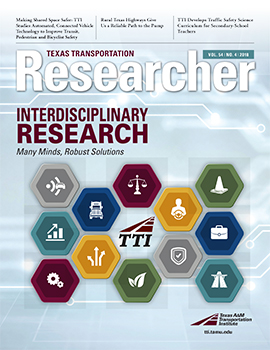Competing Ideas Yield the Best Interdisciplinary Findings

Following his first inauguration as president, Abraham Lincoln famously peopled his cabinet with what historian Doris Kearns Goodwin terms a “team of rivals” in her Pulitzer-Prize-winning book of the same name. Lincoln brought together opponents — some of whom had run against him for the presidency — for the good of the country.
Out of that fierce competition came the decision-making process that guided our country through the Civil War.
As Lincoln’s genius demonstrated, innovation is as much about process as it is product. In our business, how we conduct transportation research is just as important as our results. I’m not talking just about methodology or equipment or procedures; I’m also talking about the importance of the human factor in the equation.
Traditionally, transportation research has been divided into logical disciplines — pavements or traffic operations or safety or economics, to name a few. Separating these disciplines makes sense from an investigative perspective. It enables experts to hyper-focus on a particular problem from a particular angle. The downside is that doing so can lead to myopia that, over time, can limit our vision.
When it comes to study approaches, thinking of transportation research in four-dimensional terms is still a relatively new concept. How can we account for environmental impacts when we design roads? How do we program intelligent transportation algorithms to maximize safety? An autonomous vehicle (AV) can think faster than a human and without emotion, but should it overrule human judgment?
It would be difficult for any single research area to completely answer questions like these. But bringing multiple viewpoints to bear on a problem can create a resilient, responsive and robust solution that’s longer lasting and more cost effective and provides the safest solution possible. The whole can yield benefits greater than the sum of its parts.
Expertise at the Texas A&M Transportation Institute (TTI) spans 12 specific focus areas. Though somewhat topically traditional — economics, environment, mobility, etc. — our matrixed approach to research encourages shared thinking across disciplinary lines. Naturally, each expert on a project champions his or her specialty — no one knows it better, after all. At TTI, we encourage healthy competition among teams, enabling the best ideas to become the best solutions.
Need to measure how extreme weather events reduce pavement life? We’ve got you covered. How should public policy reflect the capabilities and limitations of AV technology to optimize safety? We can help you figure that out. In fact, TTI offers 240 million different possible combinations of expertise based on our 12 crosscutting focus areas. So, what question do you need answered?
We’ve got a team for that.

